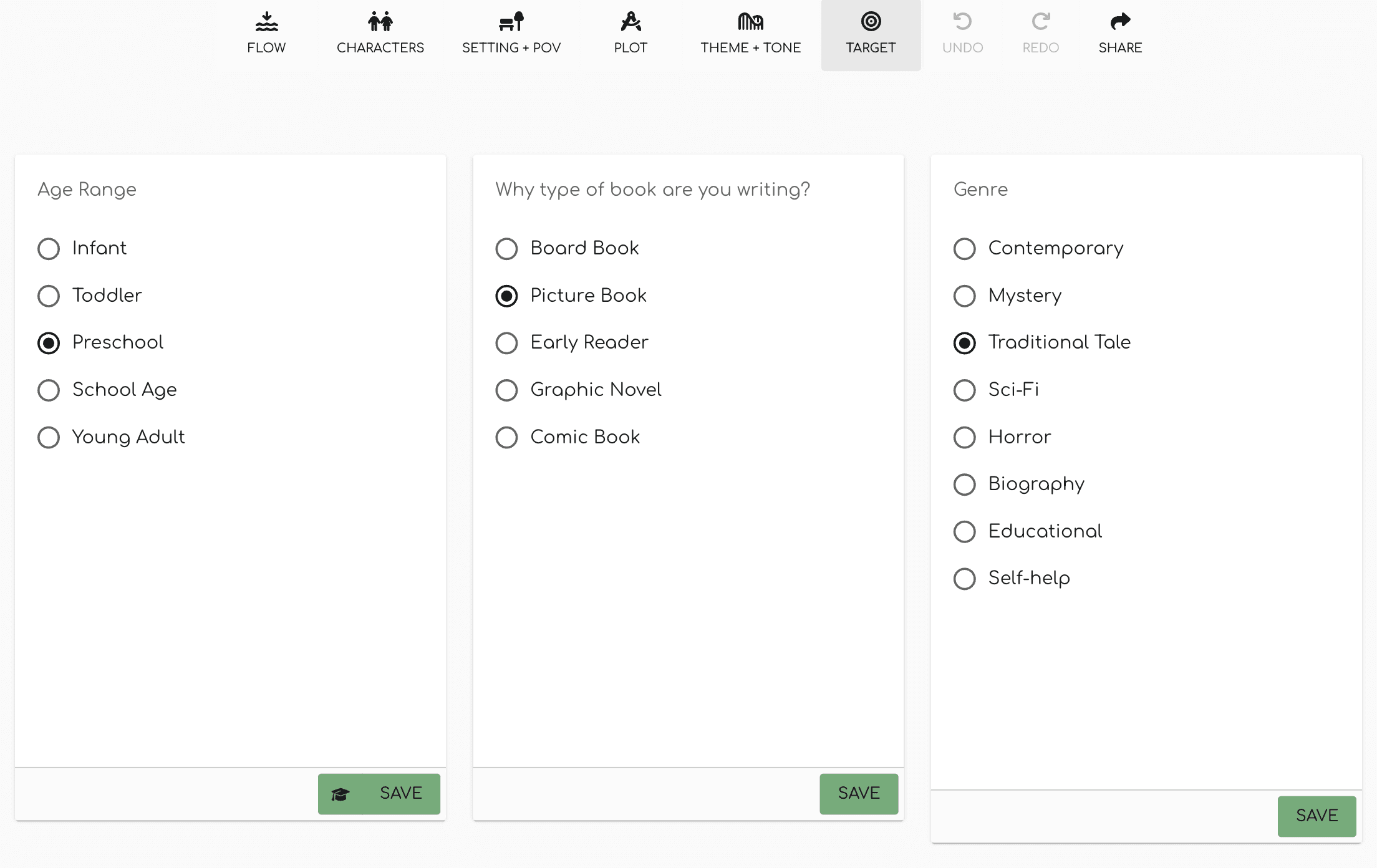Help
Help for features of Made Live Workspaces
Getting Started
Workspace
Project
Planning
Manuscript
Design
Registrations
Queries
Target
Your Target Reader: Connecting with Your Audience
Target Reader details will help you align the essence of your book with the hearts of your readers. Here, you will define your intended age range, book, type, and genre of your narrative.
Age Range
- Selecting the age range helps you tap into the abilities of your reader. The choice you make will guide your narrative complexity, language, and themes, ensuring your story speaks directly to the children it's meant for.
Book Type
- Choosing the book type will help determine your story's intent. Whether you're writing a board book, children's picture book, early reader, graphic novel, or comic book, this decision shapes the experience you're trying to curate for your audience, and helps the software make appropriate suggestions and modifications.
Genre
- Contemporary - Selecting contemporary genre infuses your story with the heartbeat of today's world. It's a canvas for characters facing current challenges and navigating modern dynamics.
- Mystery - The mystery genre is key to unlocking curiosity. Here, your narrative becomes a puzzle, engaging young minds to piece together clues to uncover secrets.
- Traditional Tale - Choosing the traditional tale genre is like stepping into the realm of folklore and fairytales. It's where timeless stories, fables, and legends captivate young readers.
- Sci-Fi - Sci-fi opens the gates of the unknown. It's where readers explore futuristic landscapes, technology's impact, and otherworldly adventures.
- Horror - The horror genre adds an age-appropriate, spine-tingling thrill. It's a playground for eerie mysteries, haunting tales, and heart-pounding adventures.
- Biography - Biography introduces young minds to real-life heroes. It's where stories of remarkable individuals inspire and ignite aspirations.
- Educational - Educational genre seamlessly weaves knowledge into narratives. It's a tool for young readers to explore new concepts and ideas while being captivated by story.
- Self-Help - In the self-help genre, your narrative becomes a guide for young readers. It imparts wisdom, encourages growth, and nurtures a sense of empowerment.
As you make these selections, you're crafting a connection that transcends words, ensuring your narrative resonates authentically, as intended.

Remember, all the details you include in your Planning stage will play a significant role in shaping your book for its intended young audience. As you carefully craft your settings, consider how each element contributes to the overall experience, captivating young readers' imaginations and making them an integral part of your story world. You're not just describing scenes – you're extending an invitation for young minds to embark on an exciting journey, explore new horizons, and form meaningful connections. Every element, every choice, becomes a bridge to adventure, curiosity, and heartfelt engagement.
